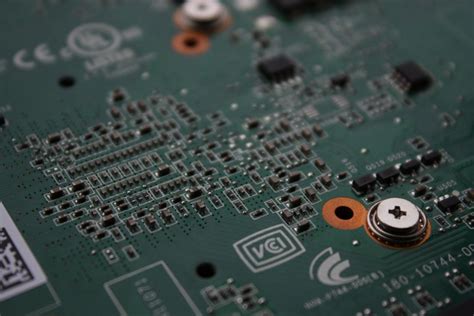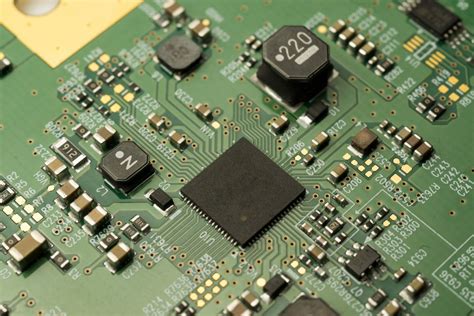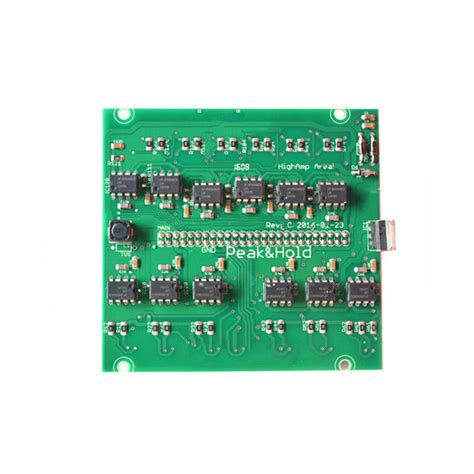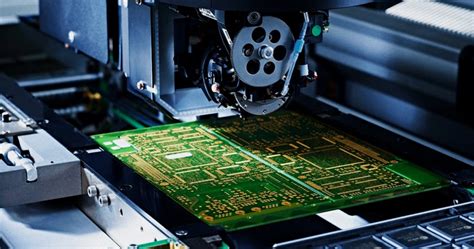How much gold is in a computer circuit board
Understanding Gold Content in Computer Circuit Boards
Understanding the gold content in computer circuit boards requires a nuanced exploration of both the technological and economic aspects of electronic waste. Gold, a highly conductive and corrosion-resistant metal, plays a crucial role in the functionality of computer circuit boards.
Its unique properties make it an ideal material for connectors, switches, and relay contacts, where reliable and efficient electrical conductivity is paramount.
However, the amount of gold present in these components is relatively small, reflecting both the precious nature of the metal and the advancements in engineering that allow for minimal usage without compromising performance.
To comprehend the gold content in a typical computer circuit board, it is essential to consider the design and purpose of the board itself.
Circuit boards, or printed circuit boards (PCBs), serve as the backbone of electronic devices, providing the necessary pathways for electrical currents to flow between various components. Within these boards, gold is primarily used in the plating of connector edges and in some cases, in the bonding wires that connect semiconductor chips to the board. The amount of gold used is meticulously calculated to balance cost and functionality, as gold is one of the most expensive materials used in electronics manufacturing.
Quantifying the exact amount of gold in a computer circuit board can be challenging due to variations in design and manufacturing processes.
On average, a standard desktop computer circuit board may contain approximately 0.2 grams of gold. This figure, however, can fluctuate based on the type of device and its intended use. For instance, high-performance servers or specialized computing equipment may contain slightly more gold to ensure superior connectivity and reliability. Conversely, budget or low-end devices might use alternative materials or reduced gold content to cut costs.
The economic implications of gold in circuit boards extend beyond manufacturing.
As electronic waste becomes an increasingly pressing environmental issue, the recovery of gold from discarded electronics has gained significant attention. Recycling processes aim to extract valuable metals, including gold, from obsolete devices, thereby reducing the need for new mining operations and minimizing environmental impact. The process involves dismantling the electronic devices, shredding the circuit boards, and using chemical or thermal methods to separate and recover the gold. Although the amount of gold in a single circuit board is small, the cumulative effect of recycling large quantities of electronic waste can yield substantial amounts of the precious metal.
Moreover, the recovery of gold from electronic waste is not only an environmental imperative but also an economic opportunity.
The value of gold recovered from discarded electronics can offset the costs associated with recycling processes, making it a financially viable endeavor. This has led to the emergence of specialized recycling companies and initiatives aimed at promoting sustainable practices within the electronics industry.
In conclusion, while the amount of gold in a computer circuit board may seem negligible at first glance, its significance is multifaceted. From enhancing the performance and reliability of electronic devices to offering a sustainable solution for electronic waste management, gold remains an integral component of modern technology. Understanding its role and value within circuit boards provides insight into the broader context of electronics manufacturing and recycling, highlighting the delicate balance between technological advancement and environmental stewardship.

The Process of Extracting Gold from Circuit Boards
The process of extracting gold from computer circuit boards is a fascinating and intricate procedure that involves several steps, each crucial to the successful recovery of this precious metal. As technology continues to advance, the demand for gold in electronic components has increased, making the extraction process not only economically viable but also environmentally significant. Understanding the steps involved in this process provides insight into the complexities of recycling electronic waste and the value hidden within discarded devices.
Initially, the process begins with the collection and sorting of electronic waste, specifically focusing on circuit boards.
These boards are integral to electronic devices, serving as the backbone for electrical connections. They contain small amounts of gold, which is used for its excellent conductivity and resistance to corrosion. Once collected, the circuit boards are subjected to a series of preparatory steps to facilitate the extraction of gold. This involves shredding the boards into smaller pieces to increase the surface area, thereby making the subsequent chemical processes more efficient.
Following the shredding process, the material undergoes a chemical treatment to separate the gold from other components.
This is typically achieved through a method known as leaching, where a chemical solution, often cyanide or aqua regia, is used to dissolve the gold. The choice of chemical depends on various factors, including environmental considerations and the specific composition of the circuit boards. During this stage, it is crucial to maintain precise control over the chemical reactions to ensure maximum recovery of gold while minimizing the release of harmful substances.
Once the gold is dissolved, the solution is subjected to a purification process to isolate the gold from other dissolved metals and impurities.
This is commonly done through a technique called precipitation, where specific chemicals are added to the solution to cause the gold to solidify and separate from the liquid. The resulting gold precipitate is then collected and further refined to achieve the desired purity level. This refining process may involve additional chemical treatments or physical methods such as smelting, where the gold is melted and cast into bars or other forms.
Throughout the extraction process, it is essential to consider the environmental impact and implement measures to mitigate any negative effects.
The use of hazardous chemicals poses significant risks, necessitating strict adherence to safety protocols and the implementation of waste management strategies. Recycling facilities often employ advanced technologies to treat and recycle the chemical solutions used in the extraction process, thereby reducing the overall environmental footprint.
In conclusion, the extraction of gold from computer circuit boards is a complex yet rewarding endeavor that highlights the importance of recycling electronic waste. By understanding the various steps involved, from collection and shredding to chemical treatment and purification, we gain a deeper appreciation for the intricate processes that allow us to recover valuable resources from discarded electronics. As technology continues to evolve, so too will the methods for extracting gold, ensuring that we can sustainably meet the growing demand for this precious metal while minimizing our impact on the environment.

Economic Value of Gold in Electronic Waste
The economic value of gold in electronic waste, particularly in computer circuit boards, is a topic of growing interest as the world grapples with the challenges of resource scarcity and environmental sustainability. As technology continues to advance at a rapid pace, the demand for electronic devices has surged, leading to an increase in electronic waste, or e-waste.
Among the various components of e-waste, computer circuit boards are of particular interest due to their gold content.
Gold is used in these circuit boards for its excellent conductivity, resistance to corrosion, and reliability, making it an essential material in the manufacturing of electronic devices.
To understand the economic value of gold in computer circuit boards, it is important to first consider the quantity of gold present.
On average, a typical computer circuit board contains approximately 0.2 grams of gold. While this may seem like a small amount, when multiplied by the millions of computers discarded each year, the cumulative quantity of gold becomes significant. This has led to the emergence of a specialized industry focused on the recovery and recycling of precious metals from e-waste.
The process of extracting gold from computer circuit boards involves several steps, including collection, dismantling, and chemical processing. Initially, e-waste is collected from various sources, such as households, businesses, and recycling centers. Once collected, the circuit boards are dismantled to separate the gold-bearing components from other materials. The extracted components are then subjected to chemical processes, such as leaching and electrolysis, to recover the gold. These processes require specialized equipment and expertise, making them economically viable only when conducted on a large scale.
The economic value of gold recovered from e-waste is influenced by several factors, including the market price of gold, the efficiency of the recovery process, and the scale of operations.
As the price of gold fluctuates, so does the profitability of gold recovery from e-waste. In recent years, the rising price of gold has made the recovery process more attractive, encouraging investment in this sector. Additionally, advancements in technology have improved the efficiency of gold recovery processes, further enhancing their economic viability.

Moreover, the environmental benefits of recycling gold from e-waste cannot be overlooked. Traditional gold mining is associated with significant environmental impacts, including habitat destruction, water pollution, and greenhouse gas emissions. In contrast, recycling gold from e-waste reduces the need for new mining activities, thereby mitigating these environmental impacts. This aligns with global efforts to promote sustainable resource management and reduce the carbon footprint of industrial activities.
In conclusion, the economic value of gold in computer circuit boards is substantial, driven by the increasing demand for electronic devices and the rising price of gold.
The recovery and recycling of gold from e-waste not only offer economic benefits but also contribute to environmental sustainability. As technology continues to evolve, the importance of efficient and sustainable resource management will only grow, making the recovery of gold from electronic waste an essential component of the circular economy. By investing in and supporting this industry, we can ensure that valuable resources are conserved for future generations while minimizing the environmental impact of our technological advancements.

Environmental Impact of Gold Recovery from Electronics
The extraction of gold from computer circuit boards is a topic of growing interest, particularly in the context of environmental sustainability and resource recovery. As the world becomes increasingly digital, the demand for electronic devices continues to rise, leading to a corresponding increase in electronic waste. This waste, often referred to as e-waste, contains a variety of valuable materials, including gold. Understanding the environmental impact of recovering gold from these discarded electronics is crucial for developing sustainable practices.
Gold is used in computer circuit boards primarily for its excellent conductivity and resistance to corrosion.
Although the amount of gold in a single circuit board is relatively small, when aggregated across millions of devices, the potential for recovery becomes significant. Typically, a ton of circuit boards can yield between 200 to 300 grams of gold, depending on the type and age of the electronics. This concentration is considerably higher than that found in gold ore, making e-waste a potentially rich source of this precious metal.
However, the process of extracting gold from circuit boards is not without its environmental challenges.
Traditional methods of gold recovery, such as smelting and chemical leaching, can have significant negative impacts on the environment. These processes often involve the use of hazardous chemicals, such as cyanide and mercury, which can lead to soil and water contamination if not managed properly. Moreover, the energy-intensive nature of these methods contributes to greenhouse gas emissions, further exacerbating environmental concerns.
In response to these challenges, researchers and industry leaders are exploring more sustainable methods of gold recovery.
One promising approach is the use of bioleaching, which employs microorganisms to extract metals from e-waste. This method has the potential to reduce the environmental footprint of gold recovery by minimizing the use of toxic chemicals and lowering energy consumption. Additionally, advances in mechanical separation techniques are enabling more efficient sorting and processing of e-waste, thereby increasing the yield of recoverable materials.
The environmental impact of gold recovery from electronics also extends to the broader issue of resource conservation.
By recovering gold from e-waste, we can reduce the need for traditional mining, which is often associated with significant ecological disruption. Mining activities can lead to deforestation, habitat destruction, and soil erosion, all of which have long-term consequences for biodiversity and ecosystem health. Therefore, by focusing on recycling and recovery, we can help mitigate these impacts and promote a more sustainable use of natural resources.
Furthermore, the economic implications of gold recovery from e-waste should not be overlooked.
As the value of gold continues to rise, the financial incentives for recovering this metal from discarded electronics become increasingly attractive. This economic potential can drive investment in more sustainable recovery technologies and encourage the development of a circular economy, where materials are continuously reused and recycled.
In conclusion, while the recovery of gold from computer circuit boards presents environmental challenges, it also offers significant opportunities for sustainability and resource conservation. By adopting more eco-friendly recovery methods and promoting the recycling of e-waste, we can minimize the environmental impact and contribute to a more sustainable future. As technology continues to evolve, it is imperative that we address these issues with innovative solutions that balance economic benefits with ecological responsibility.







